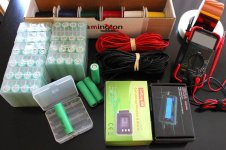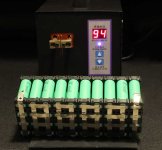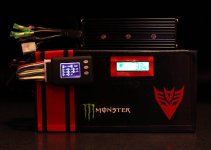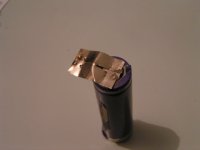Hi all
Ridethelightning and I have been figuring out some stuff... Specifically how to weld copper. It's difficult on my MOT welder ( which does .2 nickel with ease) but not impossible. Consistency is the issue for every weld. The benefits of copper are that its cheaper (1/4cost of nickel) and it carries 4x the current. So it's worth pursuing, especially when you need the amps RTL does!

What we've found with copper...
: 0.1mm copper is the upper limit for thickness to do easily, above this causes to much heating of the cell. a better spot welder (remember I'm using a MOT style) might be able to do it. (JP users comments welcome)
: nickel plating is easy to do at home ( like making a milo according to RTL!)and makes it easier to weld, the main benefit is stopping the work piece sticking to the electrodes.
: it must be slotted-10mm seems to be the minimum I can do from an end, but requires more if it's a middle slot( like 15mm)
: I'm using copper electrodes- light pressure works better. It increases the resistance of the joint resulting in more heating locally and less total current flow( judging by the noise/heating/MOT recoil) The draw back is if it's too light it can arc, blowing a hole I your tab (or even battery

)
: clean and smooth surfaces are a must.
The draw backs are:
:It's fickle and results in a poor weld if not done carefully each time= slow going
: .1mm copper is not very strong, it's quite easy to rip the tab off even with a good weld.
: it can cause more heating to the cell. more current is used but the copper can conduct it away resulting in a larger heat affected area
:the electrodes sticking is a PITA requiring a light sand every 4-5th weld othwise it arcs. If it arcs I have to file the electrode surface back to smooth again.
Really like to hear from others who've had a go at this, and any handy tips.
I'm very close to being good enough to use copper on my good cell but not quite there yet...
Kdog






